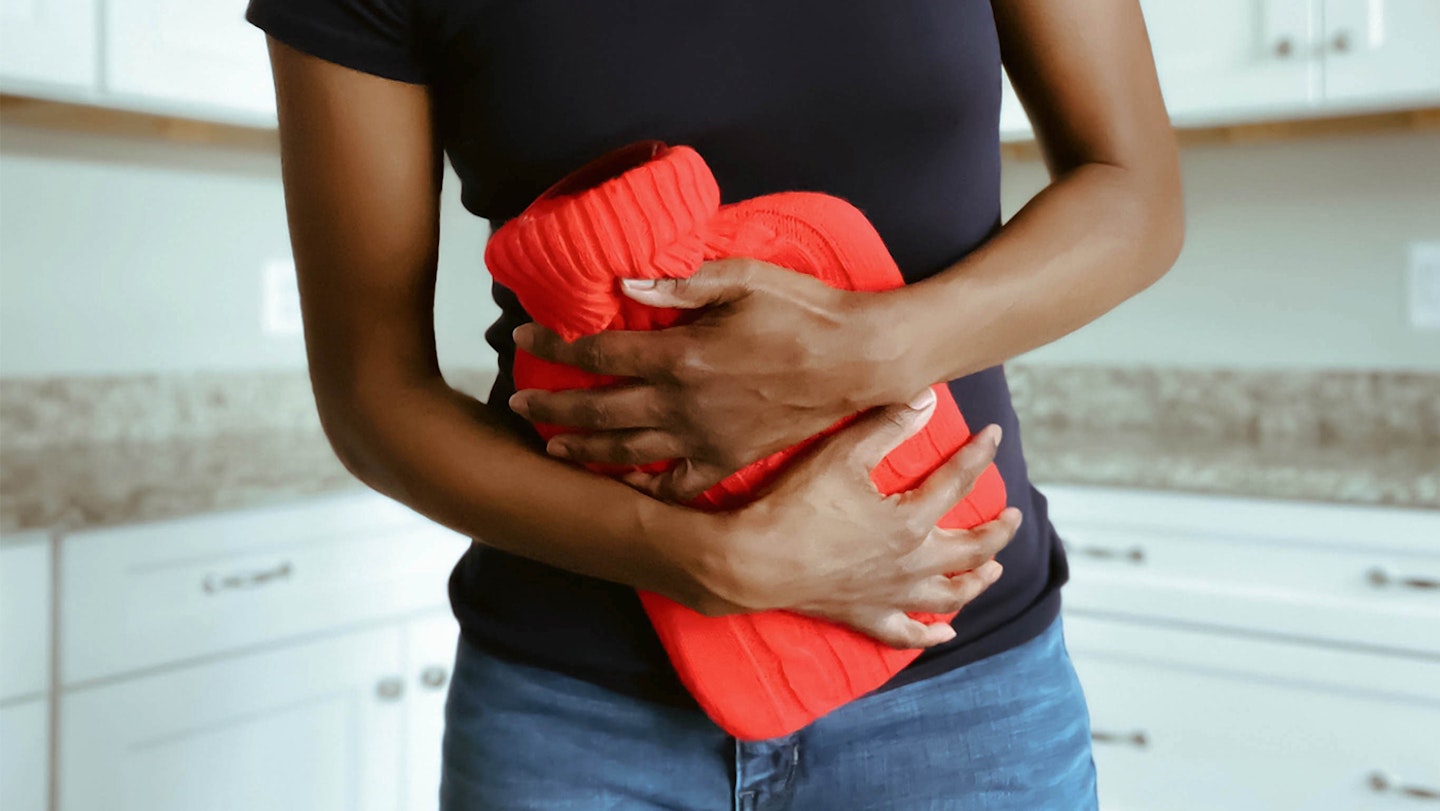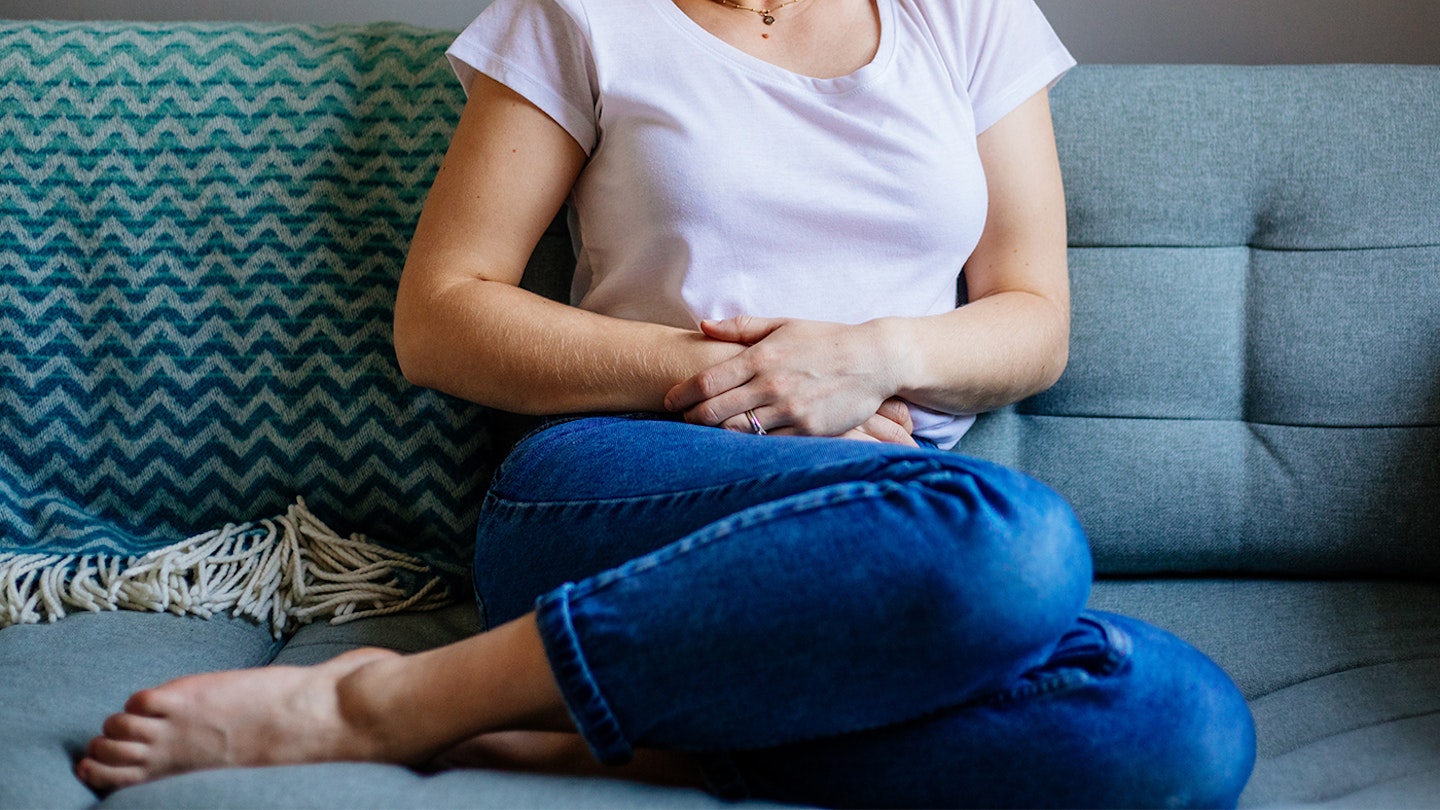Nobody looks forward to their period. This phase of our menstrual cycles can bring with it lots of unsavoury side effects such as bloating, mood swings and cramps. While thankfully these unwelcome additions usually disappear after no more than a week for most of us, some find that they experience discomfort longer than this, including cramps after a period.
Although an ovulation calculator will tell you that this is not your fertile time, pregnancy can occur throughout the cycle and this pain may also be a sign of ovulation or implantation pain. It could also be a sign of endometriosis, Pelvic inflammatory disease or Uterine fibroids. While cramps after your period for one or two days is fairly normal, anything longer than this would be worth talking to a medical professional about.
What are these types of cramps called?
Those pesky menstrual cramps are known as dysmenorrhea, of which there are two types: primary and secondary. Primary dysmenorrhea is the official name for those common menstrual cramps that can occur every cycle before you get your period. Secondary dysmenorrhea is when the cramps last longer than common menstrual cramps.
"It is perfectly normal, but if it persists longer than your menstrual cycle or starts impacting your life or daily activities it is important to speak to your GP" General Practitioner Dr Stephanie Ooi (aka The GP mum) explains.
What does it mean if I have cramps after my period?
If you are experiencing pelvic pain lasting more than a couple of days after your menstrual period finishes, it's likely that you may be experiencing secondary dysmenorrhea. That said, you can actually have secondary dysmenorrhea at various points throughout your menstrual cycle, not just when your period finishes.
What do cramps after a period feel like?
"Cramps after your period may feel similar to the cramps you experience before or during a period (this may feel an aching muscle or stomach ache), but they can also be more severe and last longer," says Dr Ooi. These are most often felt in the lower abdomen and back, however, it is also common to also feel cramping in the hips and thighs. "They may also be accompanied by nausea, tiredness and fatigue, gastrointestinal issues and headaches."

What can cause cramps after your period?
There are a number of possible conditions that could cause cramps after a period. These include:
Ovulation pain
If you notice pain occurring around a couple of weeks after your last period, this may be a symptom of ovulation, when your ovary releases an egg. This tends to be less intense than that what you are used to with your period, more of like a dull cramp.
Implantation
Experiencing period pain but no period? This could actually be a sign of implantation, which typically occurs just before the time you'd usually expect your period but can occur outside of your period as early as six days or as late as 12 days after ovulation. This might be experienced alongside light spotting.
Endometriosis
A condition where the lining of the uterus starts to grow in other places such as the ovaries or fallopian tubes. Endometriosis can be a long-term condition that affects women of any age.
Uterine fibroids
These are non-cancerous growths that develop in or around the uterus. The growths are made up of muscle and fibrous tissue and vary in size. Many women are unaware they have fibroids because they do not have any symptoms, typically 1 in 3 will experience symptoms such as cramps.
Pelvic inflammatory disease
This is an infection of the female reproductive system which includes the uterus, fallopian tubes and ovaries. Pelvic inflammatory disease is a common condition, although it's not clear how many people in the UK are affected.
Adenomyosis
This is a condition that causes the lining of the uterus to bury into the muscular wall of the womb. Adenomyosis can be treated with medication but in severe cases, a hysterectomy may be required.
Ovarian cysts
These are fluid-filled sacs that develop on an ovary. Most ovarian cysts occur naturally and go away in a few months without needing any treatment.
How are cramps after your period treated?
This entirely depends on what it is that is causing the pain as the treatment will be different depending on this.
"In the short term, you should self-treat post-period cramps the same as you would treat the cramps you experience during your period," Dr Ooi advises. "This may include over-the-counter pain relief such as paracetamol or ibuprofen or using a hot water bottle to help relax." Light exercises such as yoga or walking may also help relieve cramps.
"If you experience menstrual tiredness and fatigue, supplementing your diet with iron may replace the iron lost from your period, providing sustained energy throughout your cycle" says Dr Ooi. "When choosing an iron supplement, it is important to choose one that provides at least 14mg of iron (the recommended daily allowance) and is gentle on the stomach. I recommend Active Iron because it is clinically proven to increase iron levels whilst helping to avoid the common side effects of iron."
However, if your cramps are found to be a result of the likes of Pelvic inflammatory disease or a growth, you may be offered treatment following diagnosis.
When should you seek help for cramps?
If your cramps persist longer than your menstrual cycle, you may have an underlying condition and require medical treatment. "If your symptoms change or get worse, you should see your GP and possibly see a Gynaecologist who will conduct a pelvic examination," explains Dr Ooi.
A journalist since 2015, Emily Gilbert is the Features & Reviews Editor for Mother&Baby and has written for the website and previously the magazine for seven years. Emily writes about everything from the top baby products to pregnancy, fertility and maternal mental health. Specialising in product reviews, Emily is the first to know about all the exciting new releases in the parenting industry.
